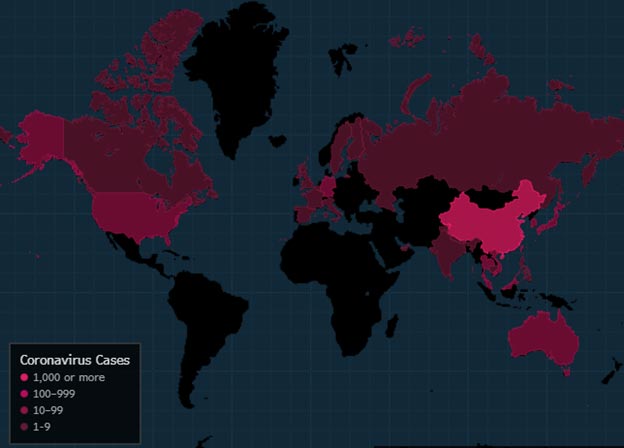Coronavirus and its impact on world currencies

The question for markets is much more how hard rather than whether the Chinese economy will be hit in Q1 2020, and what impact this will have on other world markets and currencies.
Economists from Bloomberg forecast China’s year-on-year GDP growth to slow to 5.9% but whether this forecast becomes fact depends largely on how successful China is in containing the virus’s spread.
When it comes to currencies, the ones most affected by a downturn in China’s fortunes are the Australian and New Zealand dollar. Both are closely linked to China’s economic performance because it is their largest trading partner.
So, if you have to move currency into or out of Australia, New Zealand, China or anywhere else in the near future, we have put together some information to help you understand what is happening.
What does the coronavirus outbreak mean for global markets?
The closest example of a similar outbreak was in 2003 with the SARS outbreak, when a rush to reduce risk by investors prompted significant market falls.
So far, the reaction to the Coronavirus outbreak is similar, but whether it follows the same pattern as SARS – which had a relatively short-lived impact on markets – really depends on how widespread the outbreak becomes.
For now, the only template we have is how the SARS outbreak impacted stock and currency markets. Initially, the commodities index fell 7.6% in March 2003 as SARS became known globally but this market had largely recovered by late June the same year when the World Health Organisation declared that SARS was under control.
How does the coronavirus outbreak affect currency?
The global economy is now so interlinked that a significant event in one of the major economies filters through to other economies. China is the world’s second largest economy, a status it achieved in 2010.
Nearly $400 billion was wiped off the Chinese stockmarket as it opened for the first time since the Chinese New Year started on January 25. The People’s Bank of China has already reduced interest rates and pushed an additional Yuan1.2 trillion into the Chinese banking system in a bid to boost the country’s economy. But the lack of tourism – which accounts for 6% of China’s GDP7 – and the limited movement in and out of China itself from other countries does not bode well for China’s growth this year.
This has resulted in China’s currency, the yuan, weakening against other currencies. On February 3, it was at CHY7.02 to the US dollar, the lowest point it has reached this year.
How much have the Australian and New Zealand dollars declined?
Since the Chinese government announced it had detected a new strain of virus which was a Coronavirus on January 78, the Australian dollar has fallen by almost three cents against the US dollar, from US$0.6929 on January 6 to US$0.6694 on February 2.
Over the same period, the New Zealand dollar has fallen around two cents from US$0.6665 on January 6 to US$0.6463 on February 2. Both currencies have fallen against other pairs across the board. For example, over the same period the Euro has risen more than 1.6% against the Australian dollar from 1.6135 on January 6 to 1.6405 on February 5.
